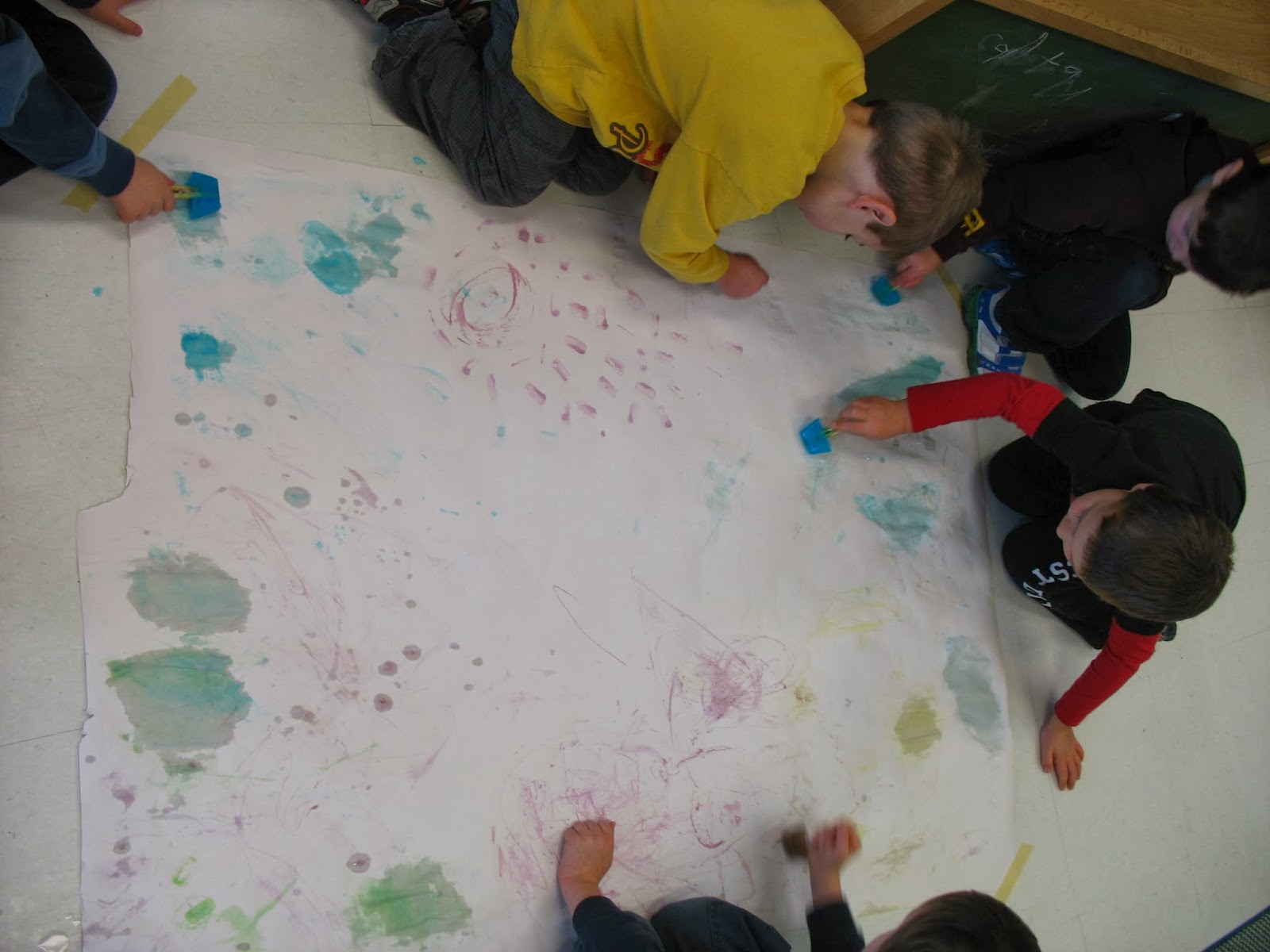Many of our "tangents" seem to stem from experiences, song and literature. This one is no different. I shared a story ordered through a recent Scholastic book order, titled: No Two Alike, written by Keith Baker. It follows the path of two birds through a winter landscape and touches on the similarities that we see in nature, and the differences that make each natural thing unique. Though there are more snowflakes than we can count (we tried :), no two are alike.
Images of snowflakes were then studied - what beautiful crystals!
"Thank you" "Imagine" (John Lennon)
Images of ice crystals by Masaru Emoto
We also created patterns with foam snowflakes.
In lieu of a light table, we used an "old-school"
overhead projector and traced their outlines.
But we kept coming back to the images, and we found it hard to believe that no two could be exactly alike.
Love & Gratitude, Masaru Emoto
Then we got crafty. It was time to make our own crystals.
With our supplies ready, we became little scientists.
We manipulated pipe cleaners to make a design with 6 points. Remembering that the star in the centre of our apples had 5 points ~ our snowflakes would have six. It was a tricky task manipulating and bending those pipe cleaners! Make an X, bend one end over, etc...
Borax was added to warm water and we watched the Borax dissolve in the water.
Then, we suspended our pipe cleaner snowflakes in the solution overnight.
(4 tbsp. borax per cup of water)
A six-pointed "snowflake" Borax crystals have formed
in a solution of Borax on the pipe cleaner
and water. overnight.
When we studied the crystals up-close we all agreed that no two were alike.
An individual "snowflake", covered in borax crystals.
Borax crystals on display with our collaborative
painting, "Snowy Day" as a backdrop.
Thank you for visiting us at our atelier.




























